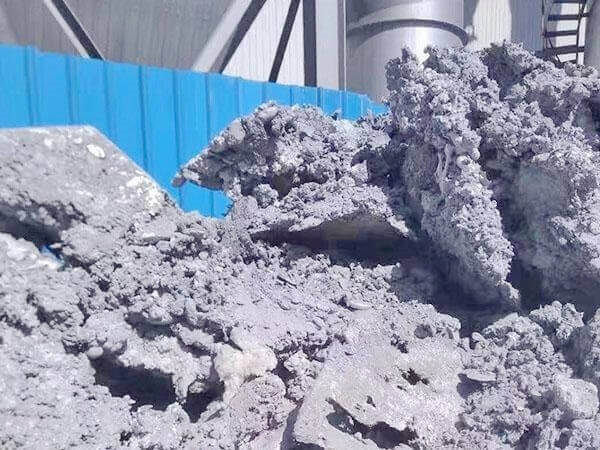Recycling and reusing industrial waste and by-products are issues of the highest importance in today’s age to usher in a more sustainable and circular economy. In most modern industries, aluminium is a widely used metal. However, the production of aluminium generates a large amount of toxic waste known as dross. Recycling and re-extraction of the remaining aluminium from dross is essential for both environmental and economic reasons.
What is aluminium dross
Aluminium dross is a by-product of the aluminium production process. The annual production of dross globally is massive, and improper disposal causes many environmental and health risks. This waste contains leachable salts like NaCl and KCl, contributing to environmental hazards. However, aluminium dross also contains metallic aluminium entrapped within alumina, making it a valuable source for metal extraction and other applications.
Landfilling aluminium dross is an inadequate solution for managing this hazardous waste product. The waste poses many environmental risks, including pollution of the environment and harm to species. Recycling aluminium dross is a more responsible environmental choice and a step toward the circular economy and a more sustainable future.
Dross is formed when molten aluminium reacts with atmospheric oxygen, creating an oxide film on the metal’s surface. This oxide product is called aluminium dross, a combination of metallic aluminium entrapped in alumina and salt transitions used in smelter plants. The challenge lies in efficiently separating the metal from the oxide.
There are two primary types of dross: white dross and black dross. White dross, produced during primary aluminium smelting, contains a high proportion of metallic aluminium. On the other hand, black dross is generated during secondary aluminium refining and contains a lower amount of usable metal. Recycling both types is essential for reducing waste and environmental impact.
Benefits of Aluminium Dross Recycling
- Reduces Landfills – Recycling dross reduces the amount of toxic waste ending up in landfills, which is important for both the environment and public health.
- Conserves Natural Resources – Recycling aluminium dross decreases the need for extracting new aluminium from the Earth’s surface, conserving a finite resource.
- Saves Energy – Recycling aluminium consumes much less energy than producing new aluminium, reducing greenhouse gas emissions and the carbon footprint.
- Reduces Fluoride Emissions – Dross recycling lowers toxic fluoride emissions in the aluminium production process, benefiting the environment.
- Filler in Concrete – Dross can be used as a filler in concrete, leading to higher flexural and compressive strength compared to pure cement.
- Refractory Applications – It serves as a source of calcined alumina for refractory products.
- Steel Industry – Dross is used for desulphurisation and deoxidation in steel refining.
The process of dross recycling
Several crucial steps are involved in the preprocessing of aluminium dross. These include cooling the hot dross and follow-up processes like crushing and grinding. Mechanical methods, often accompanied by agitation, release the liquid metal from the dross, leaving behind a solid residue with approximately 30-50% metallic content.
Aluminium dross then undergoes treatment through either pyrometallurgical or hydrometallurgical processes to extract valuable products. The choice between these methods depends on the metallic content within the dross. Pyrometallurgical techniques are effective when aiming for more metal recovery, while hydrometallurgical processes are preferred for dross with a lower metallic content.
Aluminium dross has the potential to be used in the generation of gaseous products like hydrogen, ammonia, and methane. Although the quantities of gas produced are relatively modest, recent research efforts have concentrated on optimising the use of aluminium dross and its by-products, creating new potential sources of these gases for industry.
Additionally, aluminium dross is a resource that contains both aluminium oxide (Al2O3) and Magnesium-aluminium oxides (MgAl2O4), making it a suitable material for refractory products used in the engineering sector. Ongoing research aims to harness the potential of aluminium dross for making refractories, thus producing value-added products for modern industries. In this process, particular attention is given to removing aluminium nitride (AlN) from the dross to improve the performance of the developed refractory materials.
Conclusion
Despite being an industrial waste, aluminium dross offers a valuable source of metallic content for aluminium recovery and other industrial products. Recycling aluminium dross is both a sustainable and economically viable solution that benefits both the economy and the environment. The refractory industry, in particular, can benefit from efficiently using dross as a raw material. By reducing waste and reusing valuable resources, aluminium dross recycling is crucial in building a more sustainable and environmentally friendly world. It’s time for industries to embrace this eco-friendly approach to waste management and resource use.


